The following measurements directly on the onboard sound are certainly more practical than what can be output with the RightMark Audio Analyzer using the looped output and input, which is why I will not use this data with a clear conscience. All motherboards use a very similar Realtek chip (ALC1200/1220), so that one should hardly notice any serious differences in the pure loop. But what can you measure what you really need in daily practice? Output power or voltage as RMS value are such a thing, as is the interferring voltage level while the graphics card is running. If you want to know whether you can hear what you see, you are in good hands here.
Power Output and Voltage
For those of you who don’t know: Headphones should really always be connected to the front panel, unless the manufacturer explicitly advertises special outputs for them. Almost all manufacturers (with very few exceptions) offer more power or higher voltage on the front panel. If you connect the headphones in the back, you’ve almost always lost. This is just a small reminder to those who have never thought about it before. Unfortunately, the manufacturer’s specifications are almost always missing here, so that I consider this test to be very essential. Unfortunately also the usual reviews are completely incomplete, why ever.
The same is true for very different RMS powers at different impedances – depending on the motherboard. There are boards that perform reasonably well at 32 Ω and lose more than average on higher impedances. The Aorus Elite is just such a candidate. It easily beats the Gaming Edge WIFI at the front panel at 32 Ω, but lags behind at 250 Ω, and at the rear connector it only offers a powerless amplifier output, regardless of the impedance, but is not suitable for headphones there. The Asus board is even weaker here and has the weakest output of all three boards in totall, especially on the back side.
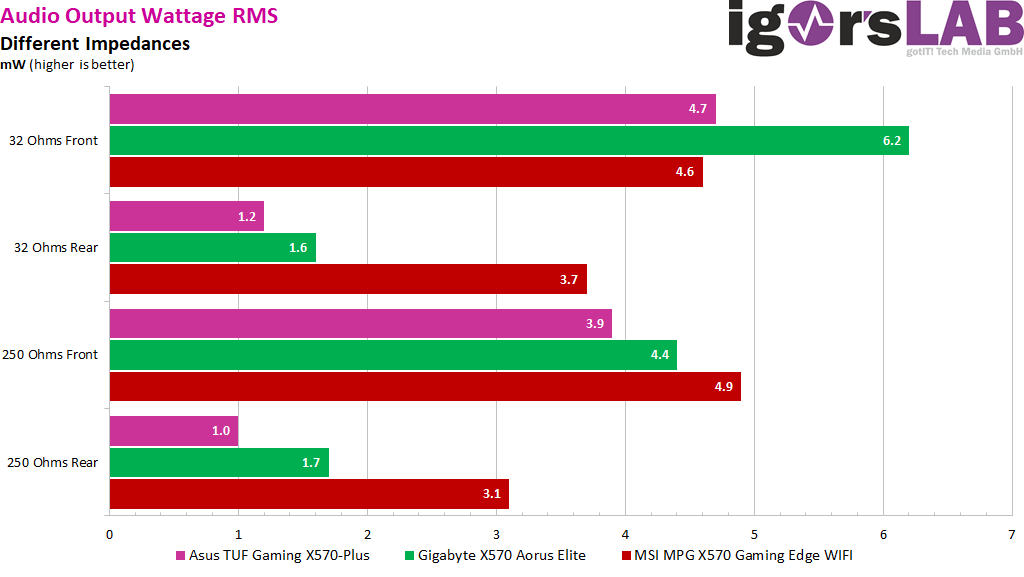
Similarly, I also list the output voltages once again, depending on your preference and later calculation approach for your own conclusions.
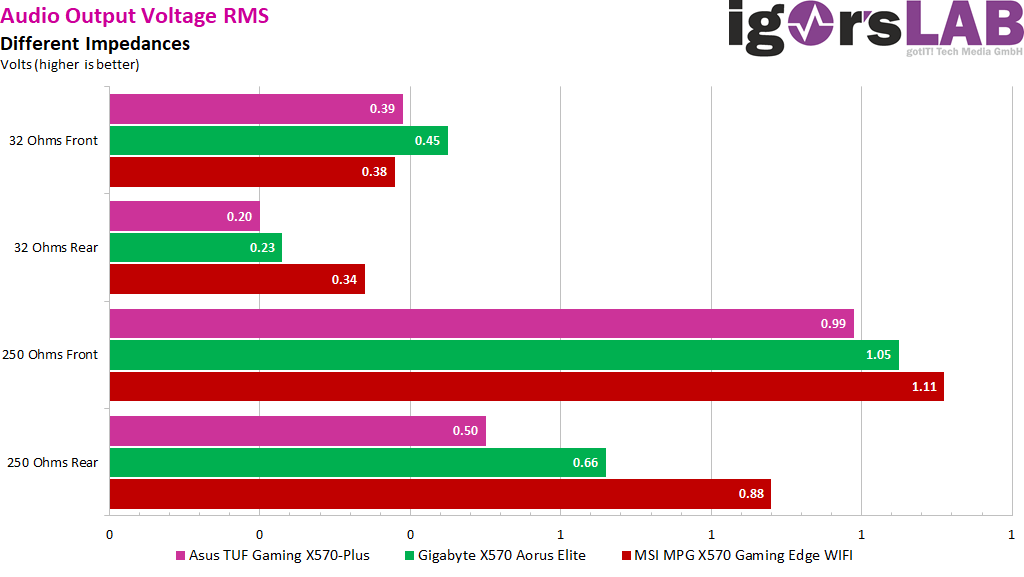
Interferring Voltage (“Noise”)
Let’s start with the positive: The crosstalk between the channels is almost not measurable and certainly not audible. Also the external voltage distance at the front output of the running PC with fully turned up volume is still okay. But there are differences, which are certainly also due to the impedance of 1 1 kΩ. The fact that the Asus TUF Gaming and Aorus Elite perform somewhat better here is, however, due to their very weak rear output from 250 Ω and higher. Those who generally deliver lower voltages will also have lower values for the external voltages. However, this is not a real advantage.
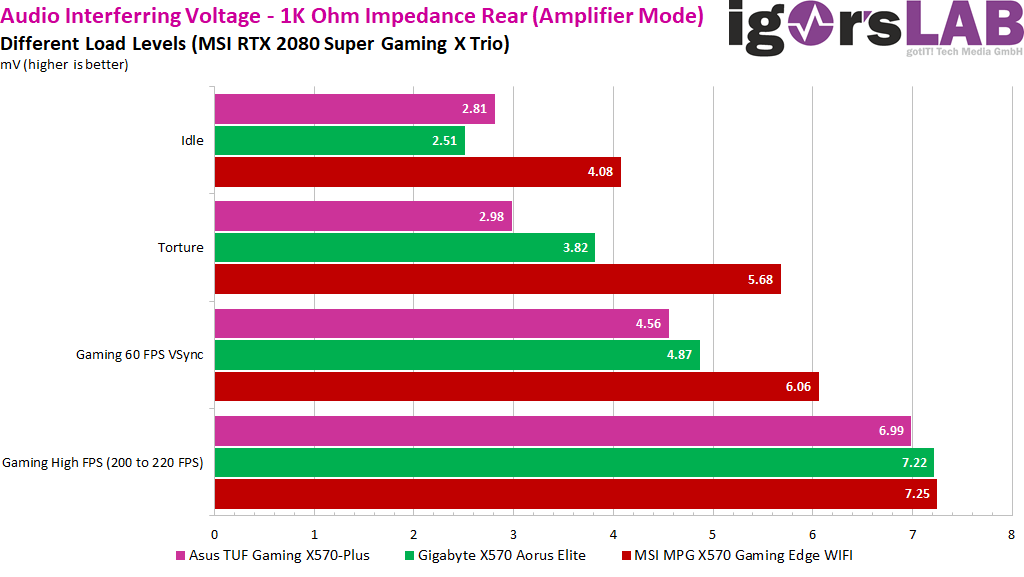
Amplifier power, characteristic sensitivity and sound pressure level
If you buy headphones, the so-called sensitivity is a very important indicator of how loud this piece can be operated at the end, i.e. which SPL (Sound Pressure Level) it still reaches at which amplifier power. The only difference is that a certain sound pressure level is not always generated in the same way. A lot depends on the recorded material. So if you want an average, well-tolerated SPL of e.g. 85 dB (child-resistant and not harmful in the long run), you should, e.g. with classical music and its high dynamic range (Wide Dynamic Range), add 25 to 30 dB for the peak values. This also applies to good games with 12 to 18 dB. Pop music, on the other hand, usually has a “mere” 8 to 12 dB premium as a rule of thumb.
The first table shows us rather poor headphones with a sensitivity of 85 dB/mW up to 94 dB/mW and what amplification power you have to use to achieve a maximum sound pressure level between 90 and 115 dB. Whether the parts can withstand and survive this is, of course, another matter. If you know the impedance of your headphones, the above measurements also provide the output power in Watt RMS, which you now have to look for on the left Y-axis of the curves. The X-axis shows the resulting SPL sound pressure level in dB and the colored curves can be assigned to the respective characteristic sensitivity of the headset in question. Please click to enlarge the diagram:
You need headsets with at least 94 dB/mW to reach at least 113 dB. All other products miss the maximum target by a wide margin. In the next diagram, I would have the slightly better headphones, where the output power required is limited:
Interim conclusion
All of the tested boards didn’t stain themselves with fame, even though the performance of the ALC 1200/1220 is hardly to be criticized, which is unfortunate. It doesn’t matter if a board with 32 or 250 Ω end devices performs better, because in total all output powers below 10 mW per channel are simply too low. Especially since it was not possible with any board to reach full modulation or an incipient distortion. The achievable levels are generally too low. And please take care to always connect headphones or headsets to the front, otherwise little will become even less.
















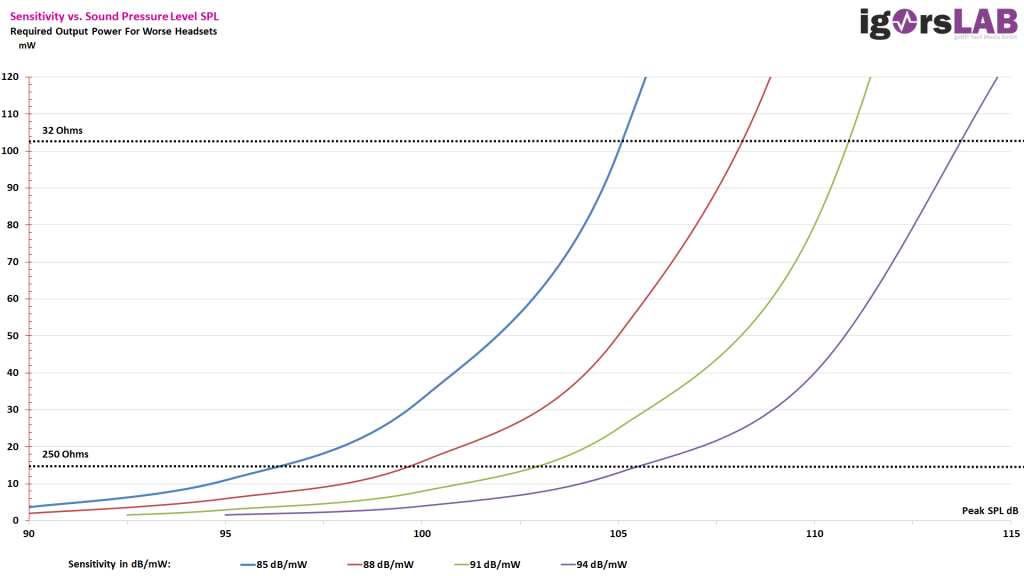
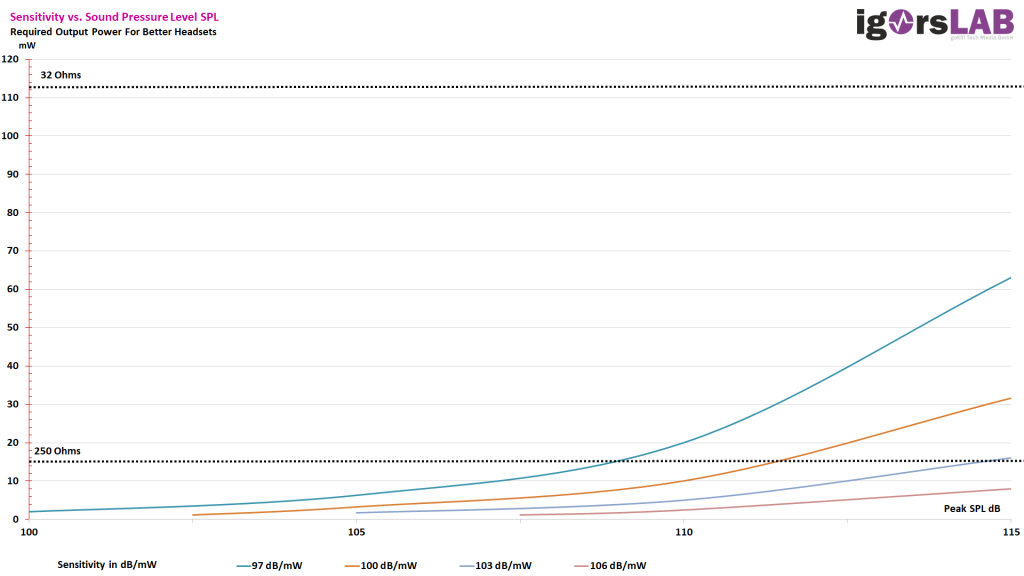



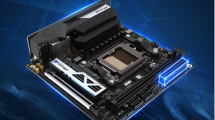












Kommentieren